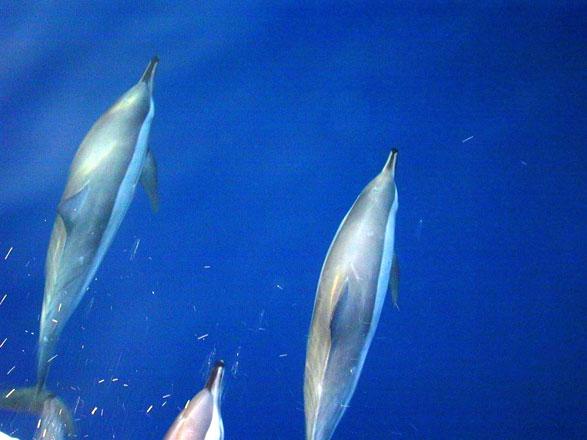You are here
Sharks, fascinating and scary, capture attention
By AP - Jul 11,2015 - Last updated at Jul 11,2015

Two North Carolina fishermen caught a shark they measured to be larger than 1.8 metres while out in the water in Kill Devil Hills (Photo courtesy of Facbook/Anna Korman)
AVON, North Carolina — It’s the golden hour, right before sunset, when the light is soft and pretty. The landscape looks like a postcard. Tourists stroll, kids run.
No one is in the water. No one wants to be a feast for a shark.
“This is a very sharky place,” mused 56-year-old John Kane as he stood on the Avon Pier and stared into the crashing surf.
They’re out there, somewhere, in the murky, antifreeze-green water. There are sharpnose and black tips, bulls and tigers. Maybe even a great white or two, if Twitter is to be believed. Always lurking, always swimming, always eating.
And too often, of late, their prey has been human: In a 28-day span, eight people have been bitten by sharks in North Carolina, a new high for the 80 years in which records have been kept.
The attacks have spanned a hundred-mile stretch of coastline, three of them along the barrier islands of the Outer Banks. Most of them occurred in shallow water. Injuries have ranged widely, from an 8-year-old boy who had only minor wounds to his heel and ankle to at least two others who had limbs amputated.
Authorities don’t blame the same shark, or even the same type of shark. They struggle to explain the sudden spate of attacks.
But there is no need to explain the fascination with this creature, or the fear it inspires.
Kane was hoping to catch a tarpon or mackerel. He’s fished these waters for some 30 years. The only thing he snagged on Tuesday afternoon was a shark.
“About this big,” Kane said, holding his hands some three feet apart. “I just cut ‘em loose. We have an understanding. I don’t eat them and they don’t eat me.”
If only people and sharks did have that kind of pact, maybe people would be swimming and bodyboarding and not cancelling surf lessons.
Everyone is talking about sharks along the Outer Banks. At the sushi bar in Buxton. On the radio. At the beaches, of course.
Chuck Bangley, a shark researcher at East Carolina University, said unseasonably warm water brought more turtles and fish closer to shore, which means the sharks that eat those creatures are also drawn to shore. And the hot temperatures drew more people to the beach.
Also, the Continental Shelf is narrow in the area near the Outer Banks — like another area popular for shark bites, near New Smyrna Beach in Florida — which means sharks are “pushed closer to shore” there, said Bangley.
“Any time you’re in the water, the odds are good a shark is a few hundred yards away,” he said.
There have been similar shark alarms before. The last Summer of the Shark was in 2001 — or so proclaimed the media at the time (see Time Magazine, July 3 of that year). It culminated on September 10, 2001, when a man from Russia died and his girlfriend was seriously injured by a shark, not far from the Avon Pier.
It was North Carolina’s only fatal shark attack in recent memory — there was another in 1957 — but it was quickly overshadowed by larger events. People forgot about sharks along much of the East Coast, and sharks apparently forgot about people — at least until this year.
Popular culture feeds the fear. There’s “Jaws” — which is, by the way, 40 years old this summer. And there’s Shark Week on the Discovery Channel — which runs, coincidentally, this week.
It is easy to overstate the risk that sharks pose. Some 5 million people visit the Outer Banks annually, which means that the odds that any one of them will be bitten by a shark are small. There are usually more shark attacks in Florida than any other state, according to experts. They’re rarer than rip currents, jellyfish stings and stingray attacks, and much less common than man-made calamities.
After all, there’s no denying this year’s attacks. And judging from Salken’s tale of being nipped on the ankle, there have been other, lesser incidents that have gone unreported. Maybe 2015 has been a banner year for attacks, but local swimmers and surfers say they’re used to seeing at least a few sharks each year.
“Sharks have always been here,” said lifeguard Michael Morris, as he admired as osprey diving for fish. “This is an ocean. You can’t control an environment like that. It’s not Disney.”
Related Articles
MELBOURNE — A rare set of teeth from a giant prehistoric megashark twice the size of the great white have been found on an Australian beach
AMMAN — More than two-and-a-half months of the coronavirus-induced lockdown has helped marine creatures to reclaim their space in the ecosys
AMMAN — The Aqaba Special Economic Zone Authority (ASEZA) on Monday announced that there were no actual sightings of sharks after conducting



















